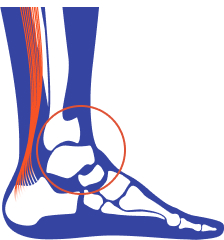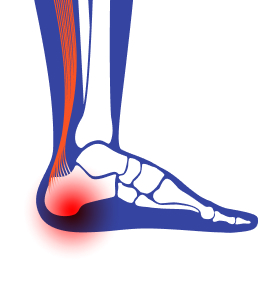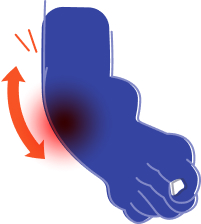About Foot and Ankle
If your are experiencing pain, discomfort, or limitations in your foot and ankle, you must consult with a healthcare professional, such as an orthopaedics
The foot and ankle are complex structures essential for mobility and support, but they are also prone to various disorders and injuries. Understanding these conditions can help you better manage your condition and seek the appropriate treatment.

Here are five common types of foot and ankle disorders and injuries:

Achilles Tendinitis
This is an inflammation or irritation of the Achilles tendon, which can cause pain and swell in the back of the ankle. It is often the result of overuse or wearing shoes that do not provide enough support. Treatment may include rest, ice packs, stretching and strengthening exercises, physical therapy, orthotic inserts, NSAIDs, and corticosteroid injections.

Osteoarthritis
This degenerative joint disease occurs when the cartilage wears down, causing the bones to rub against each other. It can occur in the joints of the toes, midfoot, and ankle, and is more common in older adults. Treatment may include weight loss, exercises, orthotic inserts, NSAIDs, physical therapy, and surgery.

Fracture and Dislocation
A fracture is a break in a bone, while a dislocation is a separation of two bones that are normally joined together. Both can occur in the foot and ankle due to trauma or overuse. Treatment may include rest, ice packs, compression bandages, splints, NSAIDs, physical therapy, and surgery.

Plantar Fasciitis
This is a common cause of heel pain, characterised by plantar fascia inflammation. It is often caused by overuse, flat feet, high arches, or wearing shoes that do not provide enough support. Treatment may include rest, ice packs, stretching and strengthening exercises, orthotic inserts, NSAIDs, and physical therapy.

Sprains
This is an injury to a ligament caused by overstretching or tearing. It can occur in the ligaments that support the ankle joint, the toes, or the midfoot. Treatment may include rest, ice packs, compression bandages, splints, NSAIDs, physical therapy, and surgery.
Consult With Our Foot & Ankle Specialists
If you are experiencing pain, discomfort, or limitations in your foot and ankle, you must consult with a healthcare professional, such as an orthopaedic doctor at SJMC.
They can help diagnose your condition, recommend the appropriate treatment, and provide guidance on preventing future problems.

